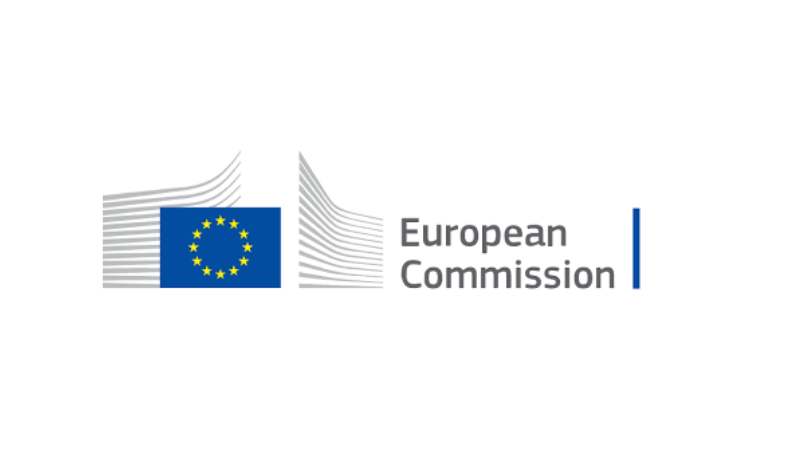In the world of crypto regulation, there are decades where nothing happens and then there are weeks where decades happen.
Last month, for those excited about the next leg of the crypto story, it was the latter.
The European Commission, the executive arm of the 27-member bloc, reached an agreement on how crypto will be regulated. The Regulation on Markets in Crypto Assets (MiCA), is a wide-ranging regulation that will seek to tame the ‘wild west’ reputation the industry has developed.
Arvin Abraham, a partner at the law firm McDermott Will & Emery, said the EU’s agreement on the regulatory framework (MiCA) is a landmark move.
“It represents the first comprehensive and harmonised regulation of crypto assets by a large group of states and establishes needed guidelines to protect consumers,” he said.
“Notably, it reduces anonymous transactions, imposes reserve requirements on stablecoins and a variety of criteria for token offerings (subject to size thresholds), requires registration for certain service providers and more.”
Regulation, good or bad?
Crypto adherents, particularly those with a professional interest such as founders and investors, hope that the incoming legal and regulatory certainty for the market will mean more crypto firms investing and innovating across the region.
Charles Delingpole, founder and CEO ofComplyAdvantage,agreed many crypto firms understand the sector needs a regulatory parity with fiat.
"Crypto can be sustainable. However, to do so, it will have to conform to the basic standards that make any financial system work, including the need for financial stability, protections for consumers, anti-financial crime measures, and market conduct guidelines."
Katie Fry-Paul, a crypto regulatory expert at law firmTaylor Wessing, added MiCA is likely to drive innovation, as crypto asset service providers seek the help of technology providers to secure their services.
“[This then] will mitigate the risks of the provider becoming liable for a loss of consumer crypto assets,” she said.
While few see the MiCA regulation as anything other than a net positive for the crypto and digital asset world, the competition to establish the first dominant ecosystem in Europe, as London has become for fintech, is still to play for.
With the UK’s chancellor Rishi Sunak, City minister John Glen – not to mention dozens of other ministers and senior politicians friendly to fintech and crypto – having exited their posts since MiCa was unveiled, the UK’s bold plans to establish a crypto hub seem uncertain.
In April, Glen delivered a speech stating the UK would be launching a stablecoin-friendly environment as well as proactively exploring how blockchain could underpin UK financial markets infrastructure.
Will the UK government – whatever that means over the short and longer-term – continue to look to make the UK a 'crypto-hub'?
Key to this will now be looking on at the new MiCA-era and asking if it goes too far and potentially pushes crypto asset service providers out of the EU, Fry-Paul said.
Or will it give just the right amount of legal certainty whilst also drawing innovative firms to the bloc?
”While it is clear that the EU's work on this subject is well-advanced, this does not mean that the UK's hopes of being the go-to jurisdiction for crypto-asset firms are dashed,” she said.
“Time spent in reconnaissance is seldom wasted, and the provisional agreement on MiCA may give the UK an opportunity to gauge industry views, and take advantage of its agility to take swift action."
Neal Wilson,co-CEO of EJF Capital, said ‘everyone’ in the digital currency ecosystem is a winner as a result of MiCA.
“For consumers, the regulation provides a tacit endorsement of the technology and offers peace of mind that digital currencies can operate and be used safely, which could encourage more widespread adoption,” he said.
“For companies in the space, more customers mean more opportunities to serve them through innovation. For the market, these growth opportunities could spur more investment into the industry.”
Politics aside, this, along with other factors, is moving the crypto space much more closely into the financial mainstream with blockchain technology increasingly becoming decoupled from rampant speculation on cryptocurrencies.
For example, Société Générale-Forge, the digital asset arm of the French investment bank, has partnered with Swiss firm METACO, to expand its institutional digital asset offering including digital securities such as the issuance of security tokens including a€100m European Investment Bank digital bond.
Last month, in a discussion ahead of the MiCA announcement about the future of crypto and the use of blockchain technology in mainstream finance at the French Embassy in London, regulators and senior bankers gave an upbeat outlook that change was afoot for crypto to ‘grow up’.
Gilbert Verdian, founder and CEO of Quant, told ETF Stream's sister publicationAltFi that blockchain will profoundly impact financial services – especially in asset management via the tokenisation of funds, capital markets, and perhaps most importantly, in payments and money movement.
This emerging technology can substantially lower costs by reducing the need for counterparties and complex processes, enabling new business and revenue opportunities.
“Tighter regulations like MiCA should be welcomed, as these provide the guide rails for how stablecoins and other digital assets can operate," Verdian continued. "It is important not just from an operational perspective but reputationally as well.
"Many of our customers have told us that clearer rules and guidelines around stablecoin-backing and ESG will spur more business cases to drive investment and adoption.”
The regulation, he added, also balances the need for central banks to mitigate systemic economic risks against the need for new commercial stablecoin development and innovation.
“There are less onerous obligations for smaller stablecoins; NFTs are out of scope. The EU is creating an environment which encourages the development of blockchain use cases while maintaining monetary sovereignty and control,” he said.
The crypto winter has come
Do not let the summer heatwave fool you. Sentiment towards crypto is very low owing to the crash in the prices of digital assets.
The so-called 'crypto winter' of 2022 where $2trn has been wiped off the value of the major cryptocurrencies such as bitcoin and ethereum is in full swing.
“The second ‘crypto winter’ is upon us, where we are seeing high-risk cryptocurrencies, algorithmic stablecoins and DeFi projects plummet in value," Verdian said. "The ongoing fiasco of unregulated and volatile crypto has damaged the public perception of blockchain, though this is a bit like blaming the central bank for the offences of a malicious money launderer.”
Szymon Sypniewicz is the co-founder and CEO of Ramp, a startup that wants to be the ‘Paypalof crypto’. Ramp recently raised $53m, at the end of 2021 before cryptocurrencies tanked and a bullish trend among VC investors took at the very least a temporary pause.
Sypniewicz toldAltFi last month that he agrees we are currently in the middle of another crypto winter but that the causes are more to do with the broader economic conditions rather than any deterioration in the long-term case for crypto.
“We were long overdue for a crypto winter…but this is mostly related to broader macro,” he said.
While some people connect it to recent events in the crypto space such as the Terra Luna hack, Sypniewicz said this is incorrect.
“I just think that it's the broader macro and how our crypto assets, in general, are still perceived to be relatively high risk”
“I also would not tie this to inflation. I would say that this is tied to the central bank's reaction to inflation being a tightening up of the monetary policy. In that scenario, it is fairly obvious, that the riskiest assets face some issues as the capital is flowing back or is being rolled back to some of the assets that are being perceived as lower risk.”
For startups like Ramp, which have recently raised funds, this means three things, he said.
“It is great because a market that is overheated does not really let everyone clearly cut signal from noise,” he continued. “What this means is that talent becomes harder to come by, as people are joining multiple new initiatives and multiple new startups and are getting all excited about things that are very speculative in nature.”
In addition, he said, every downturn in sentiment toward crypto brings back some clarity to the market.
“This means that projects with existing traction and a real business plan and business case that are financially stable and viable can access better talent and also more capita,” he said.
Lastly, and arguably most important he argues that all the volatility is positive for companies providing underlying platform services.
“[For Ramp], it does not really matter if things go up or down. If there is any movement in the markets, that really helps. You can clearly see that exchanges thrive both in bull runs as well as when corrections come.
“This is letting us prepare for probably a longer period of time or relative stability. It is really when the market is going sideways, or all things flatten out where companies like crypto exchanges really suffer.”
Sypniewicz added more ‘real-world’ use cases are being built where the price of crypto units does not matter because transactions are being made with stablecoins.
Depending on how long the crypto winter lasts, and how long it takes for legislation in the UK to make its way into law, are important next stages to watch. Until then, some thawing has begun. Whether the same is true for the price of bitcoin matters increasingly less so.
This story was originally published onAltFi
Related articles



